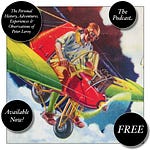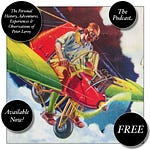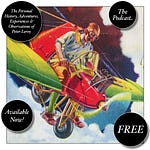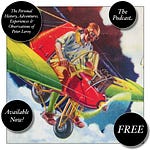14
THE CARRIAGE HOUSE, the Glynns’ home, had a roof of imbricate tile, like the mansion itself. The walls were made of stone, like those of the mansion. A stone building was an extraordinary thing in Babbington, for the town lay in the alluvial plain laid down by an ancient glacier, a plain of fine grains, silt, and sand. There were no sizable rocks anywhere nearby. To build in stone meant hauling the stone from a great distance, at great expense of money or labor, or both. When my grandfather Leroy built the stone chimney and fireplace of his house, he hauled the stones, five or six at a time, in a flivver. The builders of the Glynn carriage house—and, of course, the mansion to which it was subordinate—had the advantage of buying the services of a carter, but still the feat and the audacity of the decision that underlay it were impressive. It made the carriage house and mansion eccentric buildings from the bottom up. A stone building spoke of stability and endurance, but a stone building built on sand—“built on sand,” the very metaphor of impermanence—was a folly. Babbingtonians must have had their sense of the rightness of things confirmed when the Glynns moved into the carriage house. It was the perfect place for such eccentrics to live, the only place in town that would have suited them.
The building was in three parts, symmetrically balanced. The center had once been open, a porte cochère through which the horses were led to the courtyard in the back. On either side, there had been space for carriages and the horse stalls, and above them had been living quarters for the grooms and other outdoor staff, gardeners and drivers. The Glynns had their living room in the center part, which they had enclosed mostly with glass—small leaded panes set into large wooden frames. Set in the center of all that glass was a massive wooden door. I knocked on it.
Margot and Martha came running. They flung the door open and tugged me inside.
“Where have you been, Peter?” asked Margot. “It’s getting late!”
“What kept you?” asked Martha.
“I was just—thinking,” I said.
“Thinking?” she cried. “Can’t you think and walk at the same time?”
“Oh, sure,” I said, chuckling. “I mean I stopped in front of the Nevsky mansion, and I got to thinking about the night the mansion burned—”
“You weren’t even born,” Margot pointed out.
“Oh, no. Of course. But still I—”
“Snap out of it, Peter,” said Martha. She put her hand on my brow, as if checking to see if I had a fever.
“It’s time to beard the lion,” said Margot.
She grabbed me by the sleeve and pulled me toward the room on the left. Martha pushed. I was surprised to discover, as I shuffled along under their tugging and prodding, that I was nervous about speaking to their father. In fact, I became more and more uneasy with each step. I began to drag my feet.
“What’s the matter with you?” asked Martha.
“I don’t know,” I said. “My legs are getting kind of shaky—”
“You’re not going to chicken out?”
“No—I—at least I don’t think so.”
“Your hands are getting sweaty.”
“Yeah,” I said. “Could we wait a minute?”
“No!” said Margot. “We’re late already!”
With a last effort, they shoved me through the door of Mr. Glynn’s studio. The studio filled the entire leftward third of the carriage house, the part that had been horse stalls. It was now one large room, open to the roof. It felt cavernous. Across the beams that had supported the hayloft Mr. Glynn had laid narrow catwalks that allowed him to reach the tops of his largest canvases. He was up there now, grumbling and snorting and wiping at a canvas with a rag. The painting he was working on was impossible to take in as a single piece from where I was standing. It was two stories tall and must have been forty feet wide. Seen from below, even at such a distance, Mr. Glynn was an imposing figure: a huge pair of shoe soles, three spherical body components (one belly, two buttocks), two cavernous nostrils, and fronds of gray hair. He seemed to be wearing a brown leather apron, something like a blacksmith’s getup.
“Dad!” called Margot.
Mr. Glynn said, apparently, “Sedigidup.”
“Dad, Peter’s here,” said Martha.
“Sedigidup!”
“Daaad,” said Martha.
“Send the kid up!” he bellowed.
[to be continued]
Have you missed an episode or two or several?
You can begin reading at the beginning or you can catch up by visiting the archive or consulting the index to the Topical Guide. The Substack serialization of Little Follies begins here; Herb ’n’ Lorna begins here; Reservations Recommended begins here; Where Do You Stop? begins here; What a Piece of Work I Am begins here; At Home with the Glynns begins here.
You can listen to the episodes on the Personal History podcast. Begin at the beginning or scroll through the episodes to find what you’ve missed. The Substack podcast reading of Little Follies begins here; Herb ’n’ Lorna begins here; Reservations Recommended begins here; Where Do You Stop? begins here; What a Piece of Work I Am begins here; At Home with the Glynns begins here.
You can listen to “My Mother Takes a Tumble” and “Do Clams Bite?” complete and uninterrupted as audiobooks through YouTube.
You can ensure that you never miss a future issue by getting a free subscription. (You can help support the work by choosing a paid subscription instead.)
At Apple Books you can download free eBooks of Little Follies, Herb ’n’ Lorna, Reservations Recommended, and Where Do You Stop? and What a Piece of Work I Am.
You’ll find overviews of the entire work in An Introduction to The Personal History, Adventures, Experiences & Observations of Peter Leroy (a pdf document), The Origin Story (here on substack), Between the Lines (a video, here on Substack), and at Encyclopedia.com.














Share this post